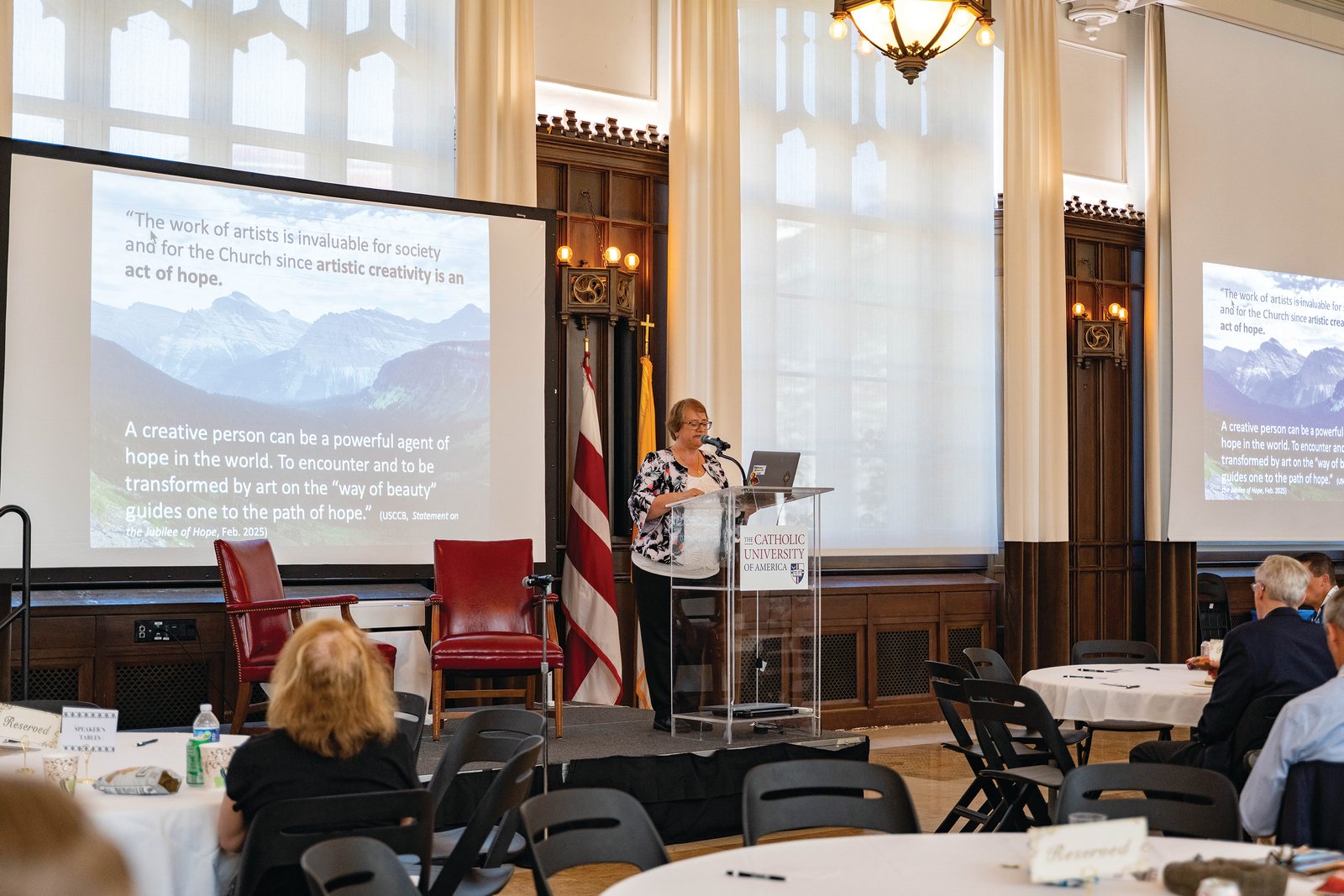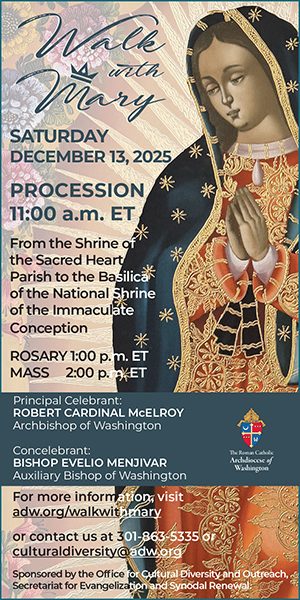The Catholic Art Institute gathered artists, architects, composers, scholars, clergy and patrons Sept. 19-20 at The Catholic University of America for its sixth annual conference, a meeting devoted to exploring how beauty advances the Church’s mission in worship and culture. Centered on the theme “Reviving Faith & Hope Through Sacred Art.
Kathleen Carr, president and founder of the Catholic Art Institute, welcomed participants and thanked them for their witness. She reminded attendees that beauty is “not a luxury, but a necessity for the soul,” and said she hoped the gathering would “inspire a return to beauty and excellence in our liturgy, church buildings, music, and art.”
This year’s theme coincided with the Jubilee Year of Hope. Carr said that in a world marked by unrest and cultural decline, sacred art bears prophetic witness that “darkness never has the final word,” recalling Dostoevsky’s line that “beauty will save the world.”
The conference began Sept. 19 with a votive Mass at the Dominican House of Studies Chapel and featured six keynote speakers from architecture, film, music and conservation.
Dr. Barbara Nicolosi, screenwriter and producer of Fatima (2020) and the forthcoming The Last Supper (2025), said in her keynote that “artistic creativity is an act of hope.” She emphasized that beauty is an objective reality reflecting God and warned against excusing mediocrity: “Too many believers excuse bad art because their heart is in the right place. But God deserves excellence.” Quoting Pope Paul VI, she added, “This world needs beauty in order not to sink into despair.”


Architect James C. McCrery II, founder of McCrery Architects and director of Classical Architecture and Urbanism at Catholic University, who is also the architect who designed the new ballroom for the White House, cautioned against “over representational art.” “The more earthly accuracy an artist achieves, the further the work tends to drift from its ability to depict heavenly reality,” he said. Sacred art, he added, must balance realism with imagination to “pull back the veil and reveal what is invisible, yet real.”
Father Patrick van der Vorst, precentor at Westminster Cathedral and founder of Christian.art, described God as “this master artist who creates, who shapes, who molds us.” He said contemplation forms the soul — “Whatever image we look at, feeds us” — and urged artists to root their work in prayer, refined with guidance from mentors and the Church.
Composer Dr. Mark Nowakowski, composer-in-residence for His Majesty’s Men and a contributor to the Mass of the Ages trilogy, highlighted sacred music’s role in uniting tradition and innovation.
Duncan G. Stroik, professor of architecture at the University of Notre Dame and founding editor of Sacred Architecture Journal, called for a new “American Renaissance in the Arts.” He described architecture as “the mother of the arts” and urged collaboration across disciplines. “If you don’t want to work hard, don’t be a classicist,” he said. He closed with the conference’s refrain: “Pulchritudo mundum salvabit. Beauty will save the world.”
Conservator David Riccio of Canning Liturgical Arts spoke on “Reviving Beauty through Decoration.” He recalled restoring 1840s murals and gilding at the Basilica of the Sacred Heart in Pennsylvania and designing a Connecticut chapel dedicated to St. José Sánchez del Río. “Decoration transforms ordinary spaces into places that lift the heart and mind to God,” he said.
William Newton moderated the conference’s question-and-answer sessions. Based in Washington, he is a critic and commentator whose work has appeared in The Spectator (U.S. edition), The Federalist, Aleteia, The Catholic Herald ( UK) and Patheos. Newton frequently lectures at universities, professional organizations and religious institutions.
The weekend’s focus on beauty, organizers said, aimed to strengthen artists and patrons in their shared work of lifting minds and hearts to God through sacred art.
“Think of your work now as an act of hope,” Dr. Nicolosi told the artists. “You’re hoping it will connect people to the Lord. You’re hoping it will be something beautiful. And that kind of prayer is irresistible to God.”













